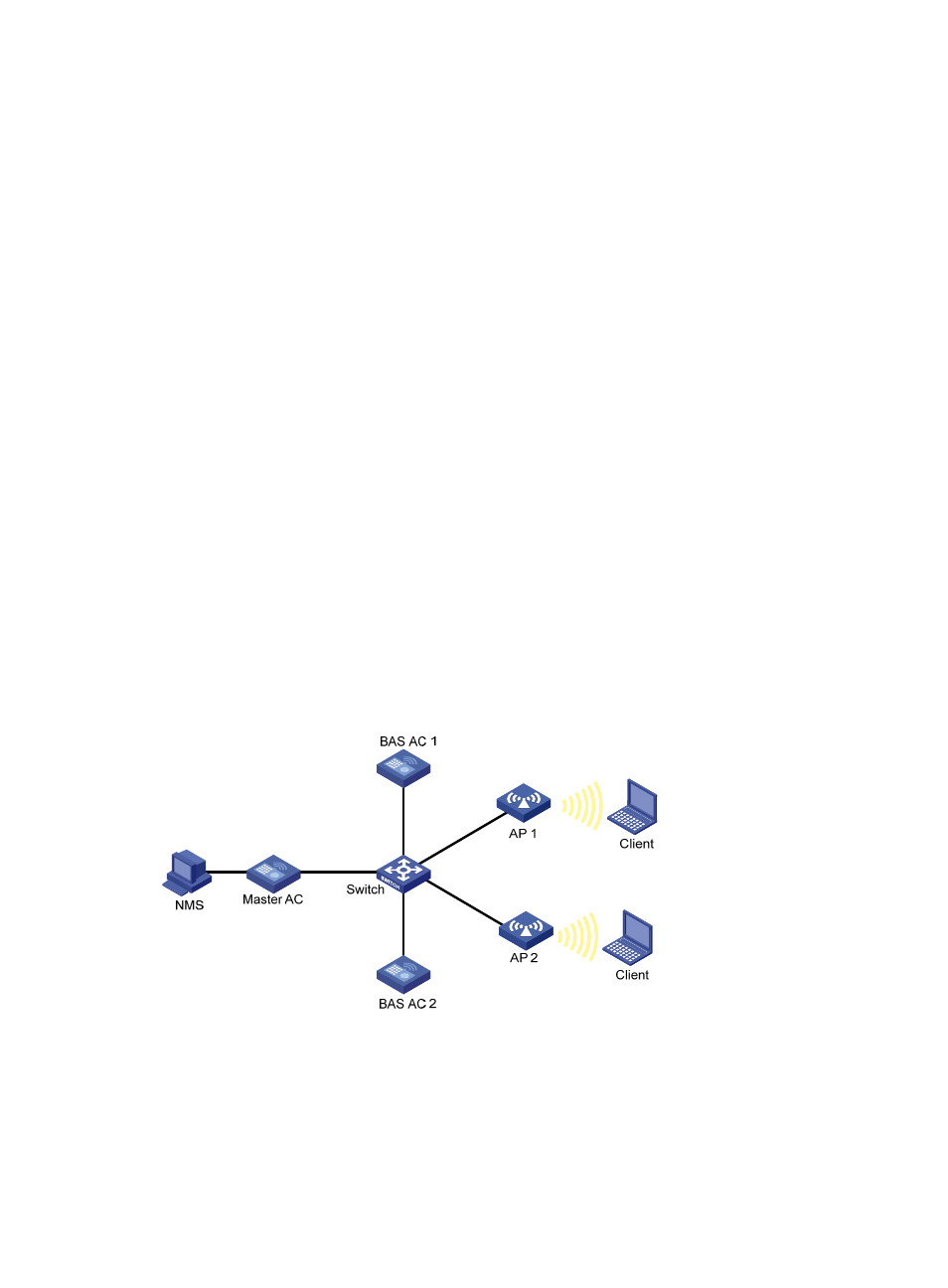Bas ac, Overview, Mac-bac operating mechanism – H3C Technologies H3C WX3000E Series Wireless Switches User Manual
Page 742

721
•
For a dual-band client, the AP directs the client to its 5 GHz radio.
•
For a 5 GHz client, the AP associates with the client on its 5 GHz radio.
The AP verifies the RSSI of a dual-band client before directing the client to the 5 GHz radio. If the RSSI is
lower than the specified value, the AP does not direct the client to the 5 GHz band.
If the number of clients on the 5 GHz radio reaches the upper limit, and the gap between the number of
clients on the 5 GHz radio and that on the 2.4 GHz radio reaches the upper limit, the AP denies the
client's association to the 5 GHz radio and allows new clients to associate with the 2.4 GHz radio. If a
client has been denied more than the maximum number of times on the 5 GHz radio, the AP considers
that the client is unable to associate with any other APs, and it allows the 5 GHz radio to accept the
client.
BAS AC
Support for this feature depends on the device model. For more information, see "
Controllers Web-Based Configuration Guide
."
An H3C cannot act as a master AC.
Overview
MAC-BAC provides an AC deployment method to simplify AC management.
MAC-BAC defines a master AC and multiple BAS ACs. As shown in
, the master AC manages
the BAS ACs, and the BAS ACs provide WLAN access and authentication.
The master AC resides between the BAS ACs and the authentication server. Among the ACs, only the
master AC communicates with the authentication server, and the BAS ACs communicate with the master
AC to complete authentication. From the authentication server's perspective, there is only one AC on the
WLAN.
Figure 750 Network Diagram
MAC-BAC operating mechanism
Before a master AC can manage the BAS ACs, it must establish a tunnel with each BAS AC. After the
tunnels are established, each BAS AC reports local information to the master AC, including IP address
used to establish a tunnel with APs, IP address of the BAS AC, the number of online APs, and IP addresses
of clients associated with the APs.